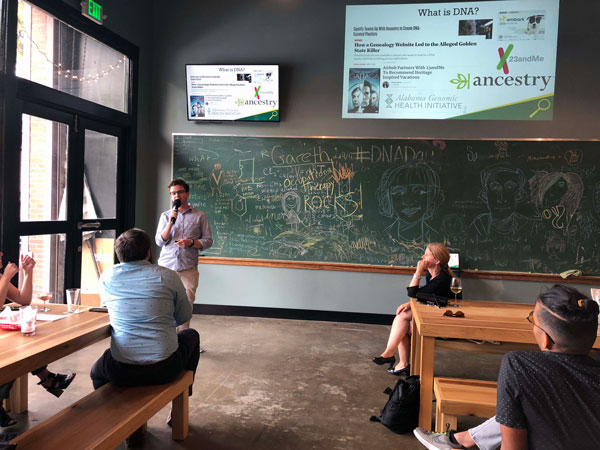What is DNA and how does DNA work to make us who we are?
In recent years, DNA testing has become incredibly popular with the increase in accessibility thanks to kits like Ancestry.com and 23andMe. These kits sequence your DNA and promise to link you to your long-lost ancestors from across the globe.

But what exactly is DNA? Many people think of DNA as the typical double-stranded helix structure, or they think of the science that created dinosaurs in Jurassic Park. How is it that a stand of DNA that looks so simple create a creature as complex as a dinosaur?
DNA is the blueprint that forms proteins – that simple sequence contains a complex series of instructions that produces a protein. However, the production of proteins is far more complicated than reading a double helix. There are other aspects that tightly regulate DNA and turn genes on and off, and understanding these mechanisms is key to understanding gene development and regulation.
Jack Schoelz, a third-year graduate student in Dr. Nicole Riddle’s lab in the Department of Biology at UAB, is working to elucidate these mechanisms. As an undergraduate, he studied the genetic contributions to the aggression of African Killer Bees, which sparked his interest in DNA regulation outside of sequences. Now, he studies heterochromatin protein-1, or HP1, a protein that can bind DNA and effect how the gene is produced. In fact, HP1 can “grow” along the DNA, making it synonymous to the famous Blob! By growing along the DNA, HP1 typically turns genes off, however, Schoelz’s work has demonstrated that HP1 may actually be able to turn genes on as well, and that’s a novel mechanism that would change the field’s perspective.
“When you’re talking about something like behavior or disease susceptibility, it’s usually not as straightforward as ‘you have this sequence of DNA so you will behave this way’,” Schoelz said. “I work less with actual DNA sequences and instead focus on how DNA is packaged … it is so much more dynamic and can change in response to environment.”
After completing computational work on HP1 and its interactions with DNA, Schoelz is designing a model using fruit flies to knockout and overexpress HP1 and see the effects on the DNA.
“Many people who work [in the field] generally think that these proteins turn genes off … but my project focuses on cases where they do the exact opposite,” Schoelz said. “The long-term goal is to understand how that is possible.”
By understanding the regulation of DNA packaging, one will have a clearer picture of the development and regulation of genes, and can have resounding effects in disease studies.